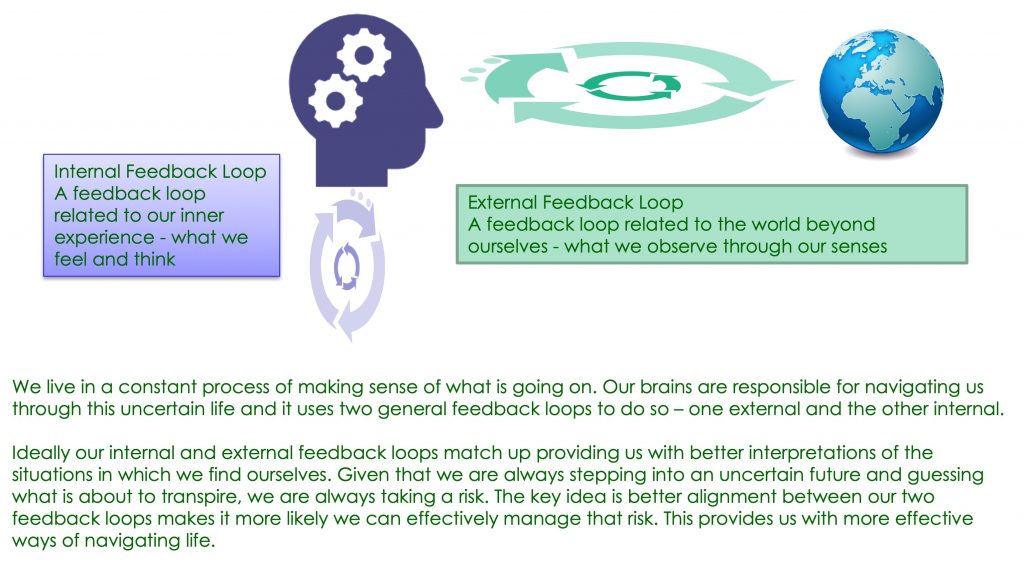
The foundations of the ontological approach which led to this work were established in part through the work of a Chilean biologist Humberto Maturana. From the 1960s he explored the nature of living systems and through his inquiry he came to some remarkable conclusions, certainly for the time.
Maturana identified that each human being is an operationally closed system. It is the state of our nervous system as perturbed by our environment that creates our own personal view of the world. He coined the term ‘structural determinism’ to help us understand this. Structural determinism means that we can only act out of the structure (physiology) we have at a point in time.
As we have our own unique structure, we respond to the world in our own unique way. This includes how we are cognisant of the world, how we interpret our observations and use language to explain those interpretations. For instance, if I find myself breathing polluted air, I may notice little difference in my way of being whereas if someone nearby has asthma then they may have great difficulty breathing. The situation is the same, but our structure responds differently.
However, it is clear our structure is not fixed but changes over time. To account for this, Maturana identified that there is ‘plasticity in our structure’. This plasticity is common to all human beings and allows each one of us to change our structure and, as a result, observe and act differently. We do this in part through what he termed ‘structural coupling’ – the interactions that we have with our environment. As our environment also includes other human beings, our coupling with others can impact on their structure and vice-versa. As a result, structural coupling provides a key ingredient for learning.
Maturana’s ideas are supported by the more recent neuroscientific research which I outlined earlier. They also speak to the idea of our way of being and the predispositions we have in given situations.
However, structure has to be supported by a flow of energy and this relates to our body’s resources and how we regulate them. Our structure is not static. Inside our bodies there is constant motion and activity. We breathe in and out, our hearts move blood around our bodies, we digest food and so on. Most of this goes unnoticed but, as we all know, some sensations come into our conscious experience.
How we can best maintain our physical health and well-being is well-known. We must intake suitable food and drink to generate enough energy to meet our needs, rest enough to restore ourselves each day and do enough physical activity to exercise our body.
However, how all our internal activity is regulated is less understood by most. Regulating our body resources to keep us alive is a key brain function. Any body movement requires some of our energy resources and we restore these resources by eating, drinking, and sleeping, and we reduce our body’s resource use by relaxing, meditating and so on. Our predicting brain has to manage all of this and is therefore constantly predicting your body’s needs.
Each time our brain predicts a physical action, like speeding up the heart, it must also predict the sensory consequences of that change, like a pounding feeling in our chest. Bear in mind that we do not actually have to take the predicted physical action for this internal movement to occur; our brain just has to predict it.
Each time our brain predicts physical action, it makes changes to our physiology and uses some energy creating a deficit in our resources. As we go through each day, we have to regulate those resources dealing with shortfalls as they deplete and replenishing them when we can. Our predictions have to cater for those rises and falls in our resource levels.
All that internal motion and resource management creates sensations through an internal system known as ‘interoception’. Interoception indicates when you need to eat and drink, scratch an itch, go to the toilet and so on. Two main brain regions are critical to interoception. Research indicates that these regions form an ‘interoceptive network’ analogous to your neural networks for vision, hearing, and so on. This interoceptive network issues predictions about your body, tests the resulting simulations against sensory input from your body, and updates your brain’s model of your body in the world.
The two brain regions have distinctive roles. The first is responsible for resource management and sends predictions to the body to control its internal environment. The second is known as the ‘primary interoceptive cortex’ and represents internal sensations.
Although interoception’s main function is manage our body’s resources, the sensations we feel form the basis of our emotions; a topic I will explore in the notes on our emotional being.
Ultimately, we live in two feedback loops – one externally focused through our senses and the other internally focused through our interoceptive network and conscious thought. The key to effectively navigating life lies in matching up the two.
